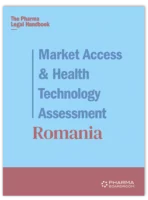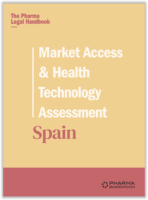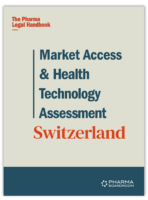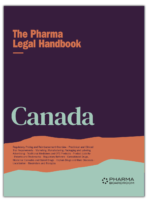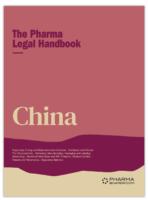Product Liability: The Netherlands
Houthoff / Netherlands
1. What types of liability are recognized in your jurisdiction?
Dutch liability law generally distinguishes between contractual liability on the one hand and non-contractual liability on the other. Non-contractual liability not only includes fault-based liability (‘onrechtmatige daad‘) but also includes a regime of strict liability for defective products (‘productaansprakelijkheid‘). The regime for strict liability constitutes the Dutch implementation of the EC Product Liability Directive (Council Directive 85/374/EEC, “Directive“).
Contractual liability
A core value of Dutch contract law is the autonomy of contract parties. The starting principle of contract freedom entails the freedom of parties to enter into agreements (or to refrain from doing so) and to determine the content thereof. Dutch contract law is regulated in the Dutch Civil Code (DCC). Contractual liability obviously requires a contractual relationship between the party at fault and the injured party. Article 6:74 DCC provides that a party is liable for damage that the creditor suffers as a result of any shortcoming in the compliance with a contractual obligation, unless the shortcoming is not attributable to the debtor. With regard to purchase agreements, the DCC prescribes that products must possess the qualities that are expected of them, taking into account the nature of the product in question and any statements made by the seller (Article 7:17 DCC). If a product does not possess the qualities agreed, the purchaser can demand certain remedies from the seller, such as delivery of the missing parts of the product, repair or replacement of the product, or a price reduction. A purchaser can also terminate the contract if the seller fails to fulfill the obligation agreed upon by contract (Article 6:265 DCC).
Strict liability for defective products: product liability (Articles 6:185 – Article 6:193 DCC)
Contrary to contractual liability, under the strict liability regime an obligation to compensate damage can also arise without an existing contractual relationship between parties. The Directive imposes strict liability on the manufacturer of a defective product. Product liability relates to damage caused by the product, instead of damage to the product itself. The regime of strict product liability entails that that a seller, distributor or manufacturer of a defective product is liable to a person injured by that product regardless of whether or not that seller, distributor or manufacturer acted intentionally or negligently. A manufacturer of products cannot contractually exclude or limit its strict liability for defective products (Article 6:192 DCC).
See further Question 2 of this Chapter for more information on Dutch product liability law.
Non-contractual: tort-based liability (Article 6:162 DCC)
Whilst a product liability claim can be based on the specific regime of strict liability for defective products, it can also be based on the general tort law regime. A civil wrongdoing between private individuals creates the legal obligation to compensate damage, as prescribed by tort law in Article 6:162 DCC. Tort-based liability requires an unlawful act that is also attributable to a person and that caused certain damage. If attributability cannot be proven by a claimant, a tort-based claim will generally not be awarded. Under Dutch tort law, an unlawful act could be an infringement of rights, an act or omission in breach of a statutory duty, or a breach of what is accepted as customary unwritten law within society. With respect to injuries or property damage, an unlawful act is easily assumed.
- Contractual Liability
Plaintiffs that are party to a contract with a defendant manufacturer may make a claim in contract. In contract law, plaintiffs can enforce express terms or terms implied from legislation, trade practice and custom against defendant manufacturers. Common law provinces have enacted legislation requiring manufacturers to provide warranties of product quality and fitness, and the Civil Code of Québec requires manufacturers to provide a warranty of quality, including a warranty against latent defects. Consumer protection acts across Canada further legislate into consumer contracts implied terms of description, fitness, merchantability, and durability of the product, and provide consumers additional remedies for false, misleading, or deceptive representations.
- Civil Liability
Plaintiffs that are not party to a contract must claim under a civil wrong. Common law plaintiffs can claim under the tort of negligence. Specific claims include negligent manufacture of a product, negligent design of a product, or the failure to warn users of product dangers. Negligence claims require proof that the product was defective, that the defendant owed a duty of care to the plaintiff, that the defendant negligently breached the standard of care with respect to the product, that the plaintiff’s damages were foreseeable, and that the defect caused or contributed to the plaintiff’s damages. Québec plaintiffs can claim under a special liability regime in the Civil Code of Québec that protects against safety defects, such as defects in design, manufacture, or preservation, as well as the lack of sufficient instructions, safety precautions, or warnings. This regime requires no proof of negligence. Plaintiffs need only to prove the existence of the product’s safety defect, the damage suffered and a causal link between the two to hold the manufacturer liable.
2. How do these types of liabilities apply to the manufacturers of medicines and devices?
Medical products (medicinal products as well as medical devices) could harm a patient, in which case the liability consequences for manufacturers follow from the context and relationship between the manufacturer and the patient. In the absence of a contractual relationship between a patient and the manufacturer of medical products, a patient is generally reliant on strict liability for defective products and fault-based tort. As fault-based tort required culpable conduct by the manufacturer, which will be rare and, in any case, very difficult to prove, a patient will generally seek to ground a claim in the strict liability regime.
Manufacturer
A general principle of Dutch product liability law is that a manufacturer is liable for damage caused by a defective product put into circulation (Article 6:185 DCC). Under Dutch law, the term “manufacturer” refers not only to the manufacturer of a finished product but also to the manufacturer of raw materials or of a component part, as well as to any person who presents himself as a manufacturer by affixing his name, trademark or other distinctive sign to the product (Article 6:187(2) DCC).
Any person who imports a product into the EEA to sell, rent, lease or otherwise provide it in the course of his commercial activities is considered to be a manufacturer under Dutch product liability law. In addition Dutch law stipulates that where the manufacturer of a product cannot be identified, each supplier shall be treated as its manufacturer, unless this supplier informs the injured party within a reasonable time of the identity of the manufacturer or of the person who supplied him with the product (Articles 6:187(3) and 6:187(4) DCC).
Defectiveness
A product is considered to be defective if it lacks the level of safety that its users are entitled to expect (Article 6:186 DCC). Whether a product is considered to be defective is determined by all relevant circumstances of the specific situation. In particular, the presentation and the foreseeable use of the specific product are taken into account, as well as the moment the product was marketed. With respect to the latter, legislation effective when a product was put into circulation might provide an indication for defectiveness of the product nowadays. A manufacturer must be aware that his products may not at all times be used as initially intended and that warnings may not be sufficiently taken into account as they should be. To some extent, a manufacturer should therefore anticipate the reasonably foreseeable misuse of his product.
Types of damage
The damage that may be eligible for compensation by the manufacturer of defective products is defined by Article 6:190 DCC. This clause provides an exhaustive list of types of damage for which a manufacturer may be liable, such as certain personal injury or property damage. With regard to personal injury, damage due to death and/or physical injury, the claimant will in principle be compensated by the manufacturer for such damages caused by the injury – assuming the manufacturer is indeed liable. Property damage will generally only be compensated if it was caused to other goods intended for regular use or consumption in the private sphere. Moreover, the defective product must have been used by the claimant primarily in that sphere. Consequential damage can then also qualify for compensation. For property damage, a threshold of EUR 500 applies: only if property damage amounts to more than EUR 500 will a claimant be able to recover his damages from the seller based on the strict liability regime. For property damages below this threshold, a claim based on fault-based tort remains (Article 6:162 DCC).
Medical products
In the Netherlands, a care provider and patient have a contractual relationship based on a medical treatment agreement. Pursuant to Article 6:74 DCC, the care provider would be liable towards the patient if he failed to fulfill his obligations under this medical treatment agreement. In addition, care providers could also be liable for complications caused by any goods used in performing their medical treatment. Damages arising from the use of a medical product are attributable to the care provider if he did not use the medical device in a way that is overall to be expected of a good care provider (Articles 6:75, 6:77 and 7:453 DCC).
If a medical product used in medical treatment is itself defective, the contractual liability of the care provider in his capacity as the product user will shift to the manufacturer (Article 6:173 DCC). The same applies to any contractual liability of the care provider as seller of the medical product (Article 7:24 DCC). Nonetheless, if these medical product are used, chosen or preserved incorrectly by a care provider, the provider himself is liable, as is the healthcare institution (Article 7:463 DCC).
The MDR prescribes that manufacturers of medical devices must have measures in place to provide sufficient financial coverage in respect of their potential liability under the MDR in a manner that is proportionate to the risk class, the type of device and the size of the enterprise (Article 10(16) MDR).
3. Does potential liability extend to the manufacturer only or could claims extend to corporate executives, employees, and representatives?
As a general starting principle, corporate liability is limited to the legal entity that has caused the damage (tort-based liability) or to the legal entity that put the product into circulation (strict liability). Consequently, potential liability claims generally extend to the manufacturer only and not also to corporate executives, employees and/or other company representatives. Only the legal entity of the manufacturer – and in some specific cases also the importer of products into the EEA or the supplier if a manufacturer is not identified (Article 6:187 DCC) – can be liable for defective products.
In theory, corporate executives, employees and representatives could be liable under tort law. This happens rarely and the specific conditions of a matter will be decisive in determining whether there is reason to allow this exceptional ‘piercing of the corporate veil’. Directors or board members could only be personally liable in exceptional cases, for instance when there is a serious reproach, mismanagement of negligence. With regard to defective products, a director might for instance and under specific circumstances be liable for knowingly trading counterfeit products.
Any person who imports a product into the EEA for sale, rental or leasing, or who otherwise provides it in the course of his business, is also qualified as a manufacturer. Such liability is considered to be no different to that of the actual manufacturer of the product. The rationale behind this is to prevent liability being avoided by manufacturers by putting products into circulation anonymously – it is presumed that importers would in fact be able to trace such manufacturers, for instance for recourse claims, in the case of defective products. To this end, for ‘anonymous products’, suppliers can be equated with the manufacturer (Article 6:187 DCC). The liability of a supplier is relevant when the identity of the actual manufacturer cannot be established. In that case, any supplier can be regarded as the manufacturer, unless he informs the injured party of the manufacturer’s or his own supplier’s identity within a reasonable time. Unless the supplier informs the injured party within a reasonable time about the importer or his supplier in the EEA, he is deemed liable for the defectiveness of the product supplied. This highlights the necessity of proper administration by the supplier in order to trace the origin of individual products.
Revision of the Product Liability Directive
On 28 September 2022, the European Commission adopted a proposal to revise the Directive. If all proposed amendments remain, revision of the Directive will lead to a significant expansion of parties that could be held liable for defective products. The proposed Article 7 ensures that there is always an “economic operator” against whom a claim for damages can be brought. For example, where no authorized representative is available, claims can also be made against “fulfillment service providers” providing packaging or similar services. Secondary liability is also expanded to cover not only retailers and distributors, but also – to the extent applicable – online platforms. Article 7 also provides that manufacturers may be held liable for changes they make to products already placed on the market, including software updates or changes caused by machine learning. This includes parties that market refurbished products. It also means, for example, that a manufacturer of a car navigation system can be held liable if an update of the navigation system turns out to be defective and an injured party suffers damage as a result.
4. How can a liability claim be brought?
Dutch law does not provide special procedural rules for bringing product liability claims, other than regular procedural law rules for bringing claims. Claiming damages for defective products is to take place in accordance with the standard procedures set out under the Dutch Code of Civil Procedure.
Claimants can choose several places to bring legal actions, depending on Dutch procedural law as well as private international law. These include the court of the claimant’s own domicile, the court of the place where the manufacturer has its registered office, and the place where the harmful event occurred. Once the claim is brought before the court, the aggrieved party must prove all elements of the claim. This means that, within the Dutch jurisdiction, the injured party will have to prove the damage, the defect in the product and the causal link between the defect and the damage. Under the strict liability regime applicable to manufacturers of defective products, manufacturers of a product put into circulation bear the risk of defectiveness, regardless of their culpability or fault. The injured party, in that case, does not have to prove that the manufacturer would actually be to blame for the defectiveness of the product in question.
The Act on the Settlement of Mass Damages Claims in Collective Actions (‘Wet Afwikkeling Massaschade in Collectieve Actie’) came into force in 2020. This Act allows an exclusive representative to act on behalf of a collective interest group in collective action proceedings. It enables damages to be claimed directly for an entire group under certain conditions, for instance where damage is caused by a defective product.
Revision of the Product Liability Directive
As the Directive is under revision, we consider it relevant to refer in broad terms to upcoming legislative changes too. The currently proposed amendments to the Directive contain significant alleviations of the burden of proof on claimants.
The proposed Article 8 introduces, for example, an obligation for manufacturers to disclose ‘relevant evidence’ in their possession under certain circumstances. The purpose of this provision is to redress any imbalance between the parties’ advantages and disadvantages due to the asymmetric spread of information about a product. A claimant requesting disclosure must have presented sufficient facts and evidence to make the claim for damages ‘plausible’. Paragraph 2 of this article limits the disclosure obligation to evidence that is ‘necessary and proportionate’ to substantiate this claim for damages. The article does not specify when such information is ‘necessary’ or ‘proportionate’, though the explanatory memorandum does offer the rather general comment that, in determining whether disclosure is proportionate, “the legitimate interests of all parties, including those of relevant third parties, should be taken into account.”
In addition to imposing an obligation on manufacturers to disclose information, the revised Directive will introduce several presumptions of evidence – in favor of consumers – that could potentially have far-reaching consequences in individual or class actions. Article 9 of the revised Directive will contain (i) the presumption of defectiveness of a product and (ii) the presumption of a causal link between the defectiveness and alleged damage. A product will be presumed to be defective if, for instance, the manufacturer fails to comply with the obligation to disclose ‘relevant evidence’ pursuant to Article 8. Secondly, defectiveness is presumed if a claimant establishes that the product does not comply with mandatory safety requirements, or that damage was caused by an obvious malfunction of the product under normal use and circumstances. Lastly, a causal link will be presumed if a defective product and the “type of damage caused is generally consistent with the defect in question”.
5. What defenses are available?
A number of defenses can be raised against a product liability claim within the Dutch jurisdiction.
First and foremost, a manufacturer is not liable for damage caused by a defect in his product if:
- the manufacturer did not put the product into circulation;
- it is plausible, given the circumstances, that the defect that caused the damage did not exist when the manufacturer put the product into circulation, or that this defect arose later;
- the product was neither manufactured for sale or for any other form of distribution for an economic purpose of the manufacturer, nor manufactured or distributed in the exercise of his profession or business;
- the defect is a consequence of the fact that the product complies with mandatory government regulations;
- the state of scientific and technical knowledge at the time the manufacturer put the product into circulation made it impossible to detect the existence of the defect;
- for the manufacturer of a raw material or of a component part, the defect is caused by the design of the product of which the raw material or the component part forms a part, or by the instructions given by the manufacturer of the product.
The “development risk” defense, i.e. that the defectiveness of a product was not discoverable according to the state of scientific and technical knowledge at the time the manufacturer put the product into circulation, rarely leads to successful rebuttal of claims invoked in the Netherlands, or in the rest of Europe. The fact that the defense rarely appears in case law does not, however, mean that it has no practical significance. Many cases in which the ‘development risk defense’ may play a part are settled out of court.
Revision of the Directive
The proposed amendment to the Directive adds an additional defense by which product liability can be avoided. It concerns products that were initially placed on the market legally but are subsequently modified – refurbished – by different manufacturers, which entails that such actions take place outside the original manufacturer’s control.
Limitation period
Under Dutch law, the limitation period for a claim based on the strict product liability regime is three years starting from the moment the damage, the defect and the manufacturer are known or could have been known (Article 6:191 DCC). The DCC also provides a longstop period: in any case, the claim for damages expires 10 years after the product has been put into circulation, as does the right of recourse of a third party (who can also be held liable). Furthermore it is emphasized that if a product consists of separate parts that were put into circulation at different times, the limitation period will start when the last part is put into circulation.
In addition to specific product liability limitation periods, the regular limitation period of five years for tort claims (Article 3:310 DCC) is simultaneously applicable. Both periods apply equally. Consequently, after four years, for instance, a claimant could still bring the same claim before the court, albeit on one legal ground, i.e. tort, and no longer on both tort and product liability.














